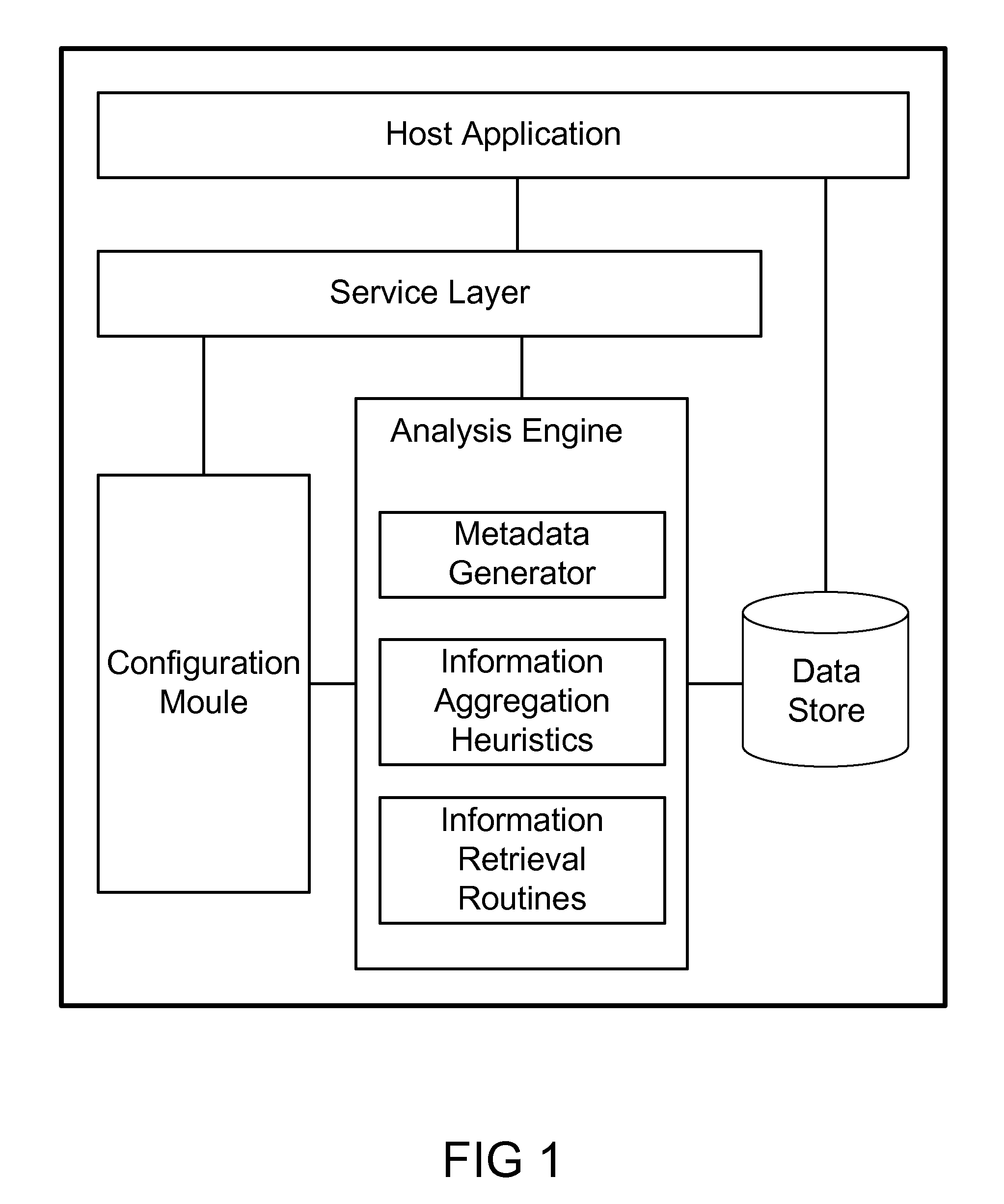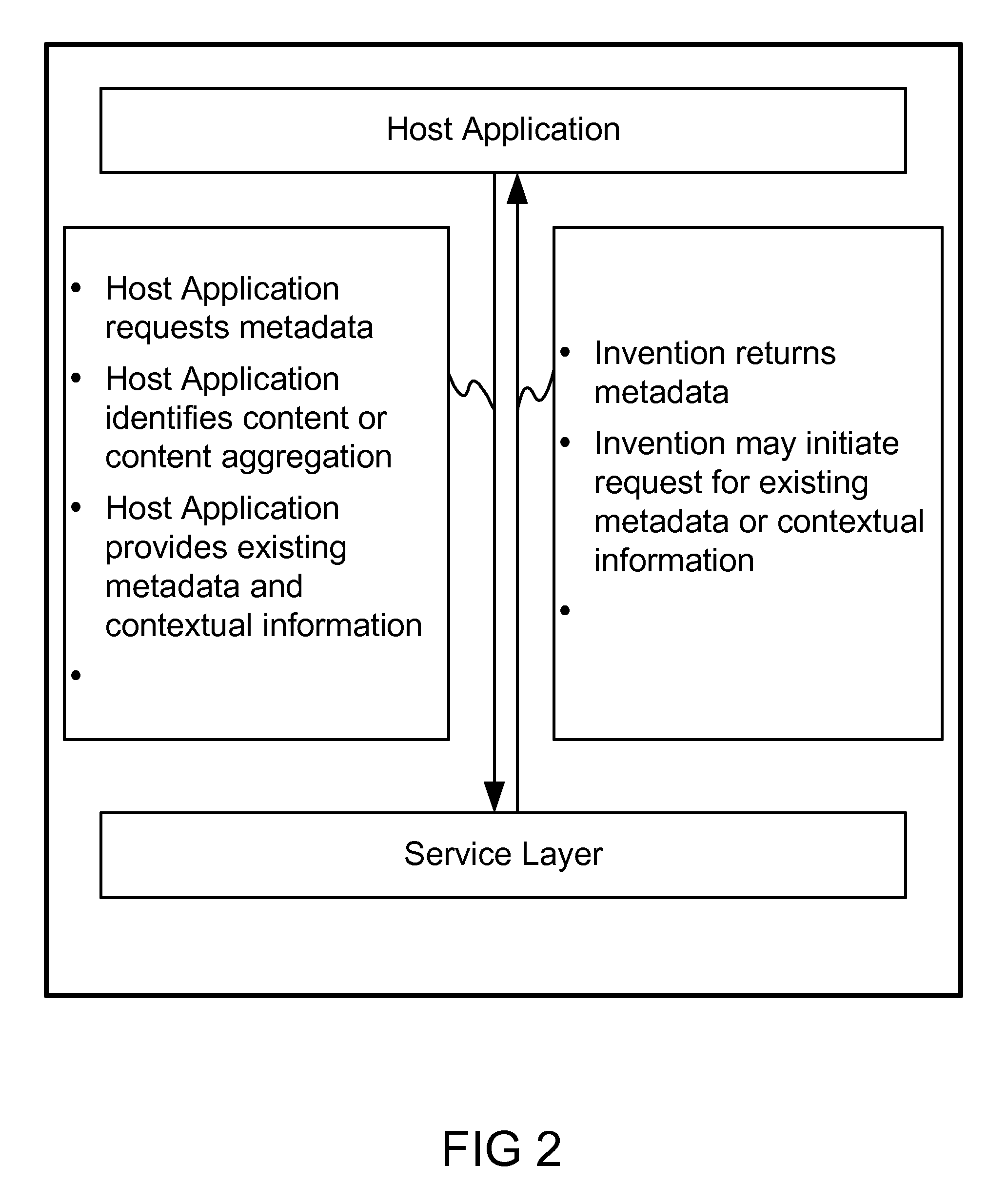Automated metadata generation of learning and knowledge objects
a technology of learning and knowledge objects and metadata generation, applied in knowledge representation, instruments, computing models, etc., can solve the problems of significant work required to update the host application, and achieve the effect of improving efficiency and improving the functionality of existing technologies
- Summary
- Abstract
- Description
- Claims
- Application Information
AI Technical Summary
Benefits of technology
Problems solved by technology
Method used
Image
Examples
Embodiment Construction
[0014]There are numerous systems and methods that extract information from digital files. These are called information retrieval routines. Most of these provide a single piece of information, and it is necessary to aggregate and process this information to automatically generate metadata that is often contextual or subjective in nature.
[0015]As an example, an instructional designer is often tasked with developing learning content that is designed to last a certain amount of time (e.g. 15 minutes). To determine the “typical learning time” of a piece of learning content by machine, one has to aggregate data on the length of text, duration of media files, complexity of the subject matter, number and nature of quizzes contained in the content, and so on. As another example, it is often important to identify the terms of use under which a document is licensed. There are many approaches to doing this, including semantic analysis, searching for key words or terms, and searching for standar...
PUM
 Login to View More
Login to View More Abstract
Description
Claims
Application Information
 Login to View More
Login to View More - R&D
- Intellectual Property
- Life Sciences
- Materials
- Tech Scout
- Unparalleled Data Quality
- Higher Quality Content
- 60% Fewer Hallucinations
Browse by: Latest US Patents, China's latest patents, Technical Efficacy Thesaurus, Application Domain, Technology Topic, Popular Technical Reports.
© 2025 PatSnap. All rights reserved.Legal|Privacy policy|Modern Slavery Act Transparency Statement|Sitemap|About US| Contact US: help@patsnap.com



